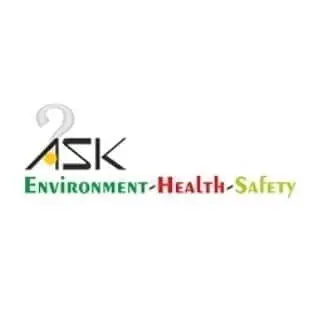- Free Version: Available for teams of up to 10
- Pricing: Premium plan $24/month (with free 30-day trial period)
- Platforms supported: Available on mobile app (iOS and Android) or a web-based software
Why Use SafetyCulture?
Use SafetyCulture to streamline your health and safety monitoring procedure. Establish an effective health and safety management system to mitigate the risks of injuries and illnesses in your workplace. With industry leaders, you can help reduce costs due to damages and have more control over workplace hazards using SafetyCulture.
SafetyCulture app can further be leveraged as an Environmental, Health, & Safety (EHS) app or as an HSE software.
Features:
- Download and customize free workplace Health and Safety checklists from the Public Library
- Schedule and perform your inspections and assessments using your mobile device or tablet
- Assign tasks to the right person and turn Issues into Actions for an immediate response and efficient inspection process
- Support your findings with photo evidence to give your team a better picture of the issue identified and help them set up the right precautions
- Generate detailed inspection reports on-site
Why Use Assure?
Assure is a digital too that utilizes dashboards and templates to empower your organization with data that works best for EHS professionals, operational managers, and teams.
Features:
- Multilingual app that global businesses can use to collaborate with employees from different regions
- Create forms and customize templates that fit your processes and business terminology
- Engage your workforce with dynamic health and safety in-app training
- Free Version: Not available.
- Pricing: Starts at $20000.00 annually.
- Platforms supported: Available on web.
Why Use SpheraCloud?
SpheraCloud is a leading software platform that helps companies monitor and achieve not just their EHS objectives but also their sustainability goals.
Features:
- Integrates critical customer data and insights to enhance predictive and prescriptive analytic capabilities of businesses
- Report incidents, near-misses, and hazards, then capture, track, and analyze health and safety information from any device
- Allows course logistics planning, participant notification, attendance monitoring, and feedback automation for trainings
- Free Version: Available.
- Pricing: Contact Sphera for more info.
- Platforms supported: Available on web, IOS, Android, Windows, and Mac.
Why Use Safesite?
Safesite is an easy-to-use safety management system that streamlines businesses’ health and safety monitoring processes. It also helps meet regulation safety compliance and supervises inspections and audits that lessen workplace safety incidents.
Features:
- Offers a Safety Meetings feature that can be used to schedule, hold, and track training attendance of your teams
- Track company overview in charts and identify safety opportunities via the Safesite Score analytics
- Log hazards, define resolution timeframe, track progress, send notifications, and follow-up with the right stakeholders
- Free Version: Available.
- Pricing: $16/member/month for the premium plan.
- Platforms supported: Available on web, IOS, Android, Windows, and Mac.
Why Use Xafy?
XAFY Safety App is a mobile (Android) and web-based EHS management solution that enables businesses to oversee safety checks and compliance across departments, processes, and within a production facility.
Features:
- Utilizes QR codes and allows for an accelerated checklist setup and machinery safety monitoring
- Supports all languages and enables diversified use across different regions
- Improves response time to damaged machines and devices through a reporting network between the EHS, maintenance, logistics, and production supervision departments
- Free Version: Not available.
- Pricing: Starts at €149.00 /month.
- Platforms supported: Available on web, Android, Windows, Mac, Chromebook, and Linux.
Why Use CorityOne?
Cority is a cloud-based software solution that works best for midsize to large global manufacturers that operate in various industries to mitigate risks, standardize procedures, and help drive operational excellence.
Features:
- Offers a centralized user interface that integrates Environmental, Health, Safety, Quality, and Analytics clouds
- Through CorAnalytics, you can empower your team with innovative intelligence tools and predictive models that make it easy to transform into actionable insights
- Automated safety inspections and audits in workplaces
- Free Version: Not available.
- Pricing: Starts at $50000.00 /year
- Platforms supported: Available on web.
Why Use EHS Insight?
EHS Insight is a cloud-based environmental health and safety (EHS) and quality management solution that helps clients track environmental effects, manage occupational health and safety objectives, and ensure organizational compliance with industry requirements.
Features:
- Enables teams to track hazardous working conditions in workplaces by directly reporting them to the right people
- Uses checklists to perform inspections, audits, and assessments to ensure the safety and compliance of the team
- Improves employee training by integrating all training requests, records, certifications, and course content in one place
- Free Version: Contact EHSInsight for more info.
- Pricing: Contact EHSInsight for more info.
- Platforms supported: Available on web, IOS, Android, Windows, Mac, Chromebook, and Linux.)
Why Use EHS Software?
EHS Software seamlessly blends into an organization’s processes by adding modules, creating custom workflows, and can be used in diverse industrial domains around the world.
Features:
- Offers a holistic EHS management approach to increase operational efficiency, manage organizational risks better, and streamline data collection
- Utilizes Corrective & Preventive Action Tracking (CAPA) management software that helps implement EHS compliance in organizations
- Allows for a centralized recordkeeping in compliance with OSHA regulation
- Free Version: Contact EHS for more info.
- Pricing: Contact EHS for more info.
- Platforms supported: Available on web, IOS, Android, Windows, and Mac.
Why Use Workhub?
Workhub is a software safety and compliance solution that allows businesses to easily manage inspections, forms, training, procedures, and policies. It monitors employee conformance and practical application through a digital tool.
Features:
- Workers can utilize incident reporting feature to easily submit near misses, identify causes, and log associated action items
- Make use of workplace screening feature and create customizable templates to assess workers and visitors’ access to each unique work location
- Practice automated scheduling and notifications of regular inspections
- Free Version: Available.
- Pricing: $3/month/user (minimum of 3 users) for Standard plan.
- Platforms supported: Available on web.
Why Use 3E Protect?
3E Protect is a software solution suitable for all industries and provides Safety Data Sheets (SDS) according to your business needs. It also enables employees to streamline chemical and workplace safety operations.
Features:
- Lets administrators track employee productivity, generate custom reports, and interact with suppliers all in one place
- Enables businesses to streamline training management, workplace safety, and inventory tracking operations
- Access the world’s largest and best SDS database with over 10 million sheets
- Free Version: Contact Verisk for more info.
- Pricing: Contact Verisk for more info.
- Platforms supported: Contact Verisk for more info.
What is a Health and Safety Software?
A health and safety software is a digital platform that enables teams to establish an effective management system that aims to minimize the risks of injuries and illnesses in workplaces. It streamlines health and safety monitoring procedures by proactively identifying risks, assigning immediate corrective actions, and tracking non-compliance of employees.
Why Use a Health and Safety Software?
Implementing a health and safety management system allows workplaces to effectively perform necessary measures for risk prevention. Here are a few other known benefits of using an H&S software in workplaces:
- Comply with industry rules and regulations. Utilizing health and safety management software helps to monitor any industry policy changes and implemen them instantly within the workplace.
- Track health and safety progress efficiently. With digital tools, companies can easily track progress in their projects and spot any hindrance in implementing health and safety protocols.
- Increases employee satisfaction. When employees see that their safety and well-being are prioritized, this translates into higher employee engagement and satisfaction. According to the Harvard School of Public Health, engaged employees also promote a healthy and safe working culture in the organization.
- Results in higher employee productivity. Using digital tools helps minimize human error and aids in performing tasks efficiently. Strict implementation of these practices also prevents workplace illness and injuries, decreasing disruption in productivity.
- Improves public image. Lack of safety-related incidents also helps maintain a positive reputation for a company as it shows its commitment to the well-being and safety of its employees.
Implementing an Effective Health and Safety Management System
A successful health and safety management system follows a formal structure of elements. This includes taking into account the following 7 elements:
1. Management involvement and commitment
An organization’s values, vision, and culture is only as strong as the management leading it. To build a safety culture in the workplace, management should be the first people to exhibit a strong commitment to a safe work environment.
Management can show their involvement by:
- Allocating resources for health and safety initiatives
- Setting clear directions and expectations with health and safety policies
- Assigning and monitoring health and safety responsibilities
2. Hazard identification and assessment
Hazard identification and risk assessments are done to promote awareness of hazards and risks, identify who is affected, and determine how serious these effects are. Below are a few inspections designed to curb incidents due to workplace hazards.
- Risk assessment
- Job Safety Analysis (JSA)
- Site-specific hazard identifications
3. Hazard control
Hazards identified during inspection and assessment are then controlled through set methods, techniques, procedures, and actions. Hazard controls applied vary depending on hazard type, but they can be any, according to the Hierarchy of Controls.
4. Emergency response
An emergency response plan refers to the methods, techniques, procedures, and actions that an organization has put in place in response to potential emergency situations (e.g., medical emergencies, fires, explosions, etc.)
5. Incident reporting and investigation
Incident reporting and investigation of an incident should be completed at the soonest possible time. Documentation of such incidents are analyzed to identify trends and requirements that will help prevent recurrence of similar or worse incidents in the future.
Implementing and managing health and safety in the organization doesn’t necessarily have to be complicated, costly, and time-consuming. The process can be simplified with a health and safety software that supports the elements discussed above.










